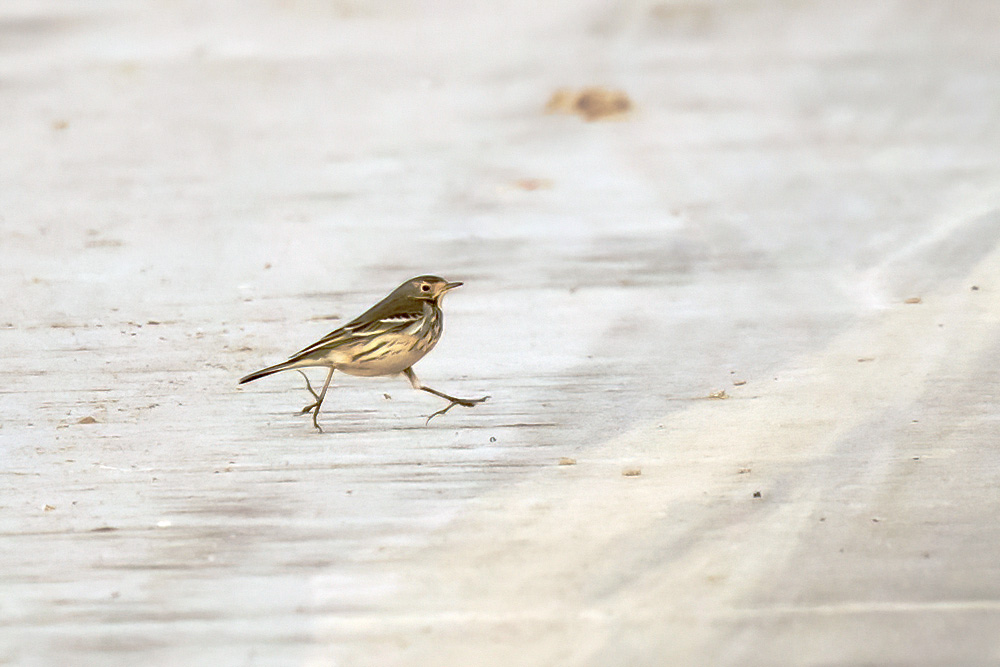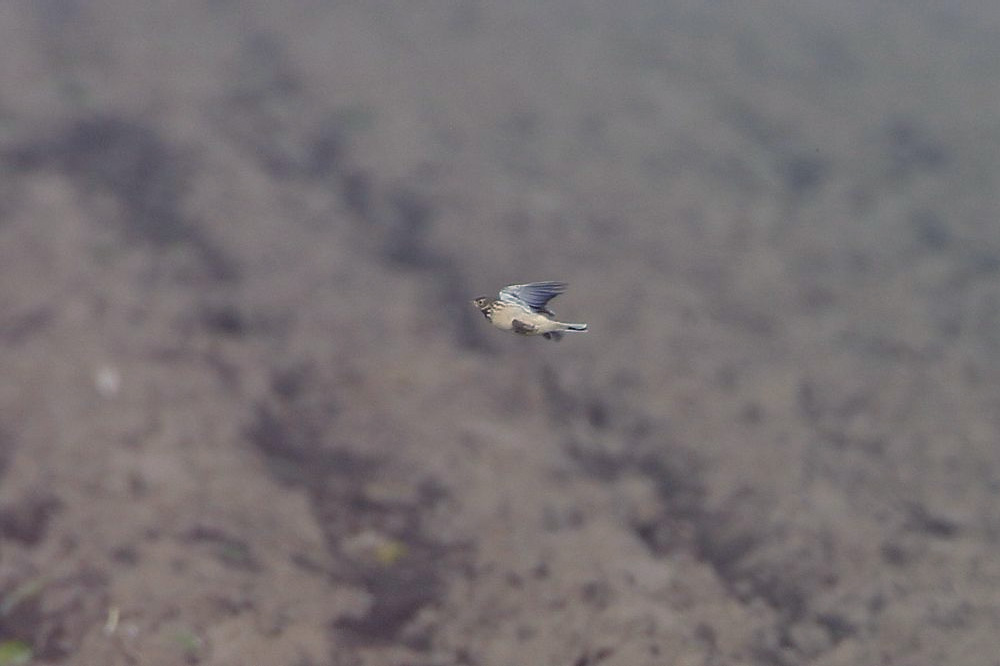
Cornelis Fokker, a young birder from the province of Zuid-Holland has a passion for Water Pipits. There are good numbers wintering in the Hoekse Waard (south east of Rotterdam, the second largest city in the Netherlands) and Cornelis already colour-ringed quite a lot of them. In winter he tries to look for any colour-ringed birds and so he did on 7 February 2023. He suddenly saw a pipit with a lot of contrast on the underparts, a clear supercilium and light lores and he identified it as a Buff-bellied Pipit Anthus rubescens. He warned other birders and in the afternoon the bird could be observed by many birders, although it was quite elusive as it fed between big lumps of clay. I was there too on 7 February, but I could not find the bird between the Water Pipits.
Happily the bird stayed longer and on 11 February 2023 I could see the bird too after a 4 hours search. The bird was present till 17 March 2023 and it covered a large area of c 2x1 km.

Note the rather plain mantle and whitish median coverts. 10 February 2023, Polder de Mijl, Puttershoek ZH; © Eduard Sangster.

The light lores are clearly visible. Note also the streaks on the breast and flanks are not pure black. 10 February 2023, Polder de Mijl, Puttershoek ZH; © Eduard Sangster.

From certain angles and light, the streaked underside looks very black. 10 February 2023, Polder de Mijl, Puttershoek ZH; © Hans Groot.

Note the buffy underparts contrasting with the whitish underwings. 10 February 2023, Polder de Mijl, Puttershoek ZH; © Hans Groot.